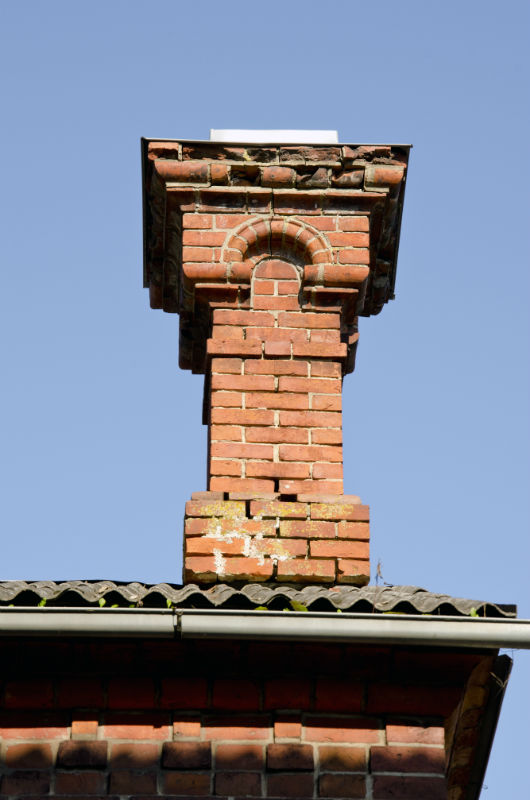
Your chimney and fireplace have worked hard, keeping you warm all winter. Now, it’s almost that time of year to give your chimney system a break during warmer weather. However, before your chimney system is shut down for the year, it’s a good idea to determine if your chimney needs any major repairs. At Old Smokey’s we want you to know the telltale signs that your chimney needs repairs. Being able to recognize symptoms associated with a chimney issue can help our chimney technicians more easily determine what is wrong with your chimney. It should be noted that even though you might be able to correctly diagnose an issue at home, that only a trained chimney professional that has been certified by the Chimney Safety Institute of America (CSIA) should attempt to make the final diagnoses and repair on your chimney system. A CSIA certified technician has been trained and tested on the correct chimney inspection and maintenance methods and is the only one who should be trusted to perform any actual work on your chimney. If an inexperienced person works on your chimney, there is a possibility that they can make the problem worse, which could be potentially hazardous to your home and your family.
Operational Issues
Now is a good time to think back about when you used your fireplace this past year. If you used your fireplace a lot this winter, you probably know exactly how it is supposed to operate for your home. While you were operating your fireplace, did you notice any issues, even if they were temporary? This could include anything from smoke coming into your living areas, draftiness, difficulty starting a fire, or poorly burning fires. These are all signs that there is some kind of airflow issue with your fireplace or chimney. Lots of times, these issues are related to creosote buildup, clogged chimneys, or a faulty damper. However, there are other issues that could also be a problem. Making sure that there is proper airflow to your fireplace is crucial to creating hot fires. Without proper airflow, you will not get your money’s worth from your fuel and your chimney will be more likely to accumulate large amounts of creosote.
Masonry Issues
Think back on the winter. Was there freezing weather? Was there a freeze/thaw cycle? If there was, you will want to check over your masonry. Moisture can wreak havoc on your chimney’s masonry. When it rains, moisture can enter tiny pores in your masonry’s brickwork and mortar. This water can pool inside of your masonry and erode it slowly from the inside out. However, the freeze/thaw cycle hastens masonry deterioration. When moisture inside your masonry freezes, it expands, putting pressure on your masonry. This can cause masonry to weaken by cracking, chipping, and crumbling the brickwork and mortar. You can inspect your masonry by looking closely at your brickwork or mortar. If you notice that your mortar is popping out or crumbling, it means that it needs to be replaced with a technique called repointing. Look at the grass around your chimney. If you see little flecks of brick on the grass, this is an issue caused by the freeze/thaw cycle called spalling. Finally, look at your bricks. If you see any cracking, loose, or crumbling brickwork, it needs to be addressed. At Old Smokey’s, our experienced masons can make sure that your brickwork is in great shape with our masonry repair services.
Chimney Components
Finally, look at all the other components of your chimney. Three components that are vulnerable to winter weather are your chimney cap, your chimney crown, and your chimney flashing. Unfortunately, all these things are located on the top, or near the top of your chimney. We do not recommend that you go on top of your roof, but instead inspect it from the ground. If you have a pair of binoculars, they can help you see your chimney top better. First look at the very top of your chimney. There should be a metal, mesh cap attached to the top of your chimney above the opening. If your chimney cap looks mangled, bent, or is totally missing, you’ll need to remedy this immediately. Your chimney cap is needed to make sure rain, debris, and nesting animals don’t enter into your chimney. Next, look at your chimney crown. Your chimney crown is the cement or mortar edge around the opening of your chimney. Your chimney crown is important for protecting deflecting water away from your masonry. If you see any crumbling or cracking in your chimney crown, this needs to be addressed. Finally, look to see if there is any shiny metal poking up in the area where your chimney meets your roof. If you notice this, it means that your chimney flashing is loosened. Chimney flashing is designed to bridge the gap between your roof and the point where your chimney comes through your roof. If it is loose or missing, rainwater can easily spill into a home, damaging walls, framing, and causing mold issues. If you notice that any of these components are damaged, they need to be repaired immediately to properly protect your chimney and home.
Doing an at-home inspection should never replace your annual chimney inspection. [https://www.oldsmokeys.com/trust-us-for-your-annual-chimney-inspection/] If you notice any of the issues with your chimney or fireplace, it is important to call a CSIA certified technician before a small issue turns into a larger one. At Old Smokey’s, our CSIA certified technicians can repair whatever issue that arises in your chimney. [https://www.oldsmokeys.com/chimney-dryer-vent-services/] If you live in northern Indiana, northern Ohio, or mid-Michigan, call us today at 800-876-6539 or 260-587-9691, or schedule an inspection appointment online. We look forward to helping you with your spring repairs.
